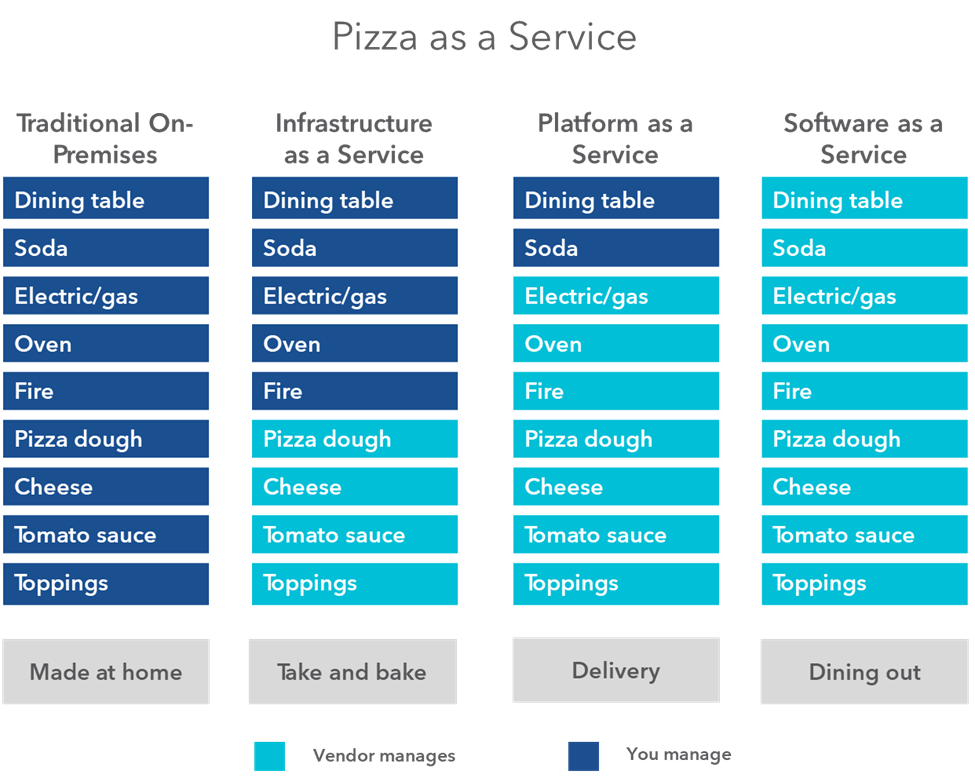
As I reflect on the transformative technologies available to us, and the capabilities they bring to revolutionize data management activities, I am eager to see these technologies fully adopted and deployed across the asset management industry. I’m talking about, not only, cloud-first data and technology strategies but also the plethora of doors that open when the old ways of doing business are truly left behind.
Citisoft recently published a white paper To the Cloud: Re-Shaping Asset Management Operations which discusses how cloud strategies are reshaping asset management operations. The commonly used “Pizza as a Service Model” analogy, used to describe the various levels of cloud hosting solutions, focuses on “what” the cloud solutions offer: hardware (kitchen and equipment), inputs (ingredients), and outputs (pizza). This blog will explore the practical application of these solutions and “how” the process (of making a pizza) is impacted, optimized, eliminated, or completely reimaged.

I’ll shed light on how data integration and storage is evolving with the capabilities a cloud-first solution brings, such as the deployment of data architectures like data fabrics and data meshes. Simply stated, data fabrics and data meshes are new data architectures that allow for applications to consume and share data in a manner that eliminates the need to physically copy and move the data to different environments.
The old way of integrating systems, via ETL (extract-transform-load) processes, is clearly on the way out. In fact, the relational databases those extracts populate should also be categorized in the legacy technology camp. This method of transporting and storing data is a slow, antiquated, error-prone, non-scalable way of moving and storing data.
Integration and storage of market data (i.e. security master data, pricing, corporate action terms, reference data) is seeing a fundamental shift. As software vendors roll-out cloud software packages, and data providers move their datasets to the cloud, tools such as Snowflake or Stardog can harmonize that data via a data fabric. These technologies eliminate the need for you to move, migrate, transform, load, or export data between systems. With your applications and data sources all in the cloud, those systems can now “talk” to each other without the need to tediously move data, validate it, etc. A market data provider can load a dataset to the cloud once, and (multiple) clients can consume it from that location without having to move and store raw datasets within their ecosystem. Conceptually, this is what video streaming services have done to the TV and movie industry whereby you don’t need to have the movie or show in your possession in order to consume it.
Meanwhile, managed data services are also taking advantage of these cloud technologies to deliver consumable data directly to their clients. These cloud-first solutions allow for the level of data management the industry has longed for but struggled to achieve by providing cleansed data that is ready for consumption. It also, and most importantly, allows for data to be stored once and used various times by multiple parties.
If you would like to learn more about these capabilities or are considering leveraging your cloud applications and services more effectively, feel free to reach out in the comments or through our online contact form.









Comments